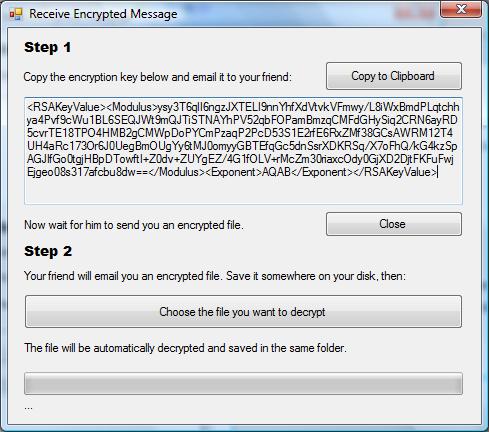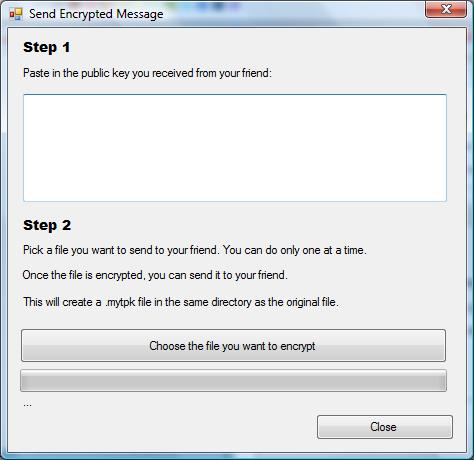Every once in a while I have a silly store I would like to share, but it is not long or funny enough to warrant a full post. So I have been sort of mentally collecting these, until I had enough for a longer post. I think this a good time to post some of that backlog. Note that I’m changing names, genders, species and other characteristics of all the guilty parties to protect their innocence… Or something like that.
Desktop Background
Coworker pops by to get some documents from my desk and makes a quiet throat clearing noise to get my attention. I rummage through the stack of papers on my desk to retrieve whatever he needs from me, and hand it to him.
“Dude, you were totally zoning out.”
“Huh?”
“You were staring at your desktop image for like two minutes straight. I usually try to have some code on my screen when I do that”
“I’m not staring. I’m waiting for Eclipse to load…”
As if to confirm my statement, the Eclipse splash pops up on my screen.
“Fair, enough…” he smiles knowingly “You might as well go get some coffee from downstairs… This is not gonna be ready any time soon”.
Advanced Internet User
Dramatis personae: me, two other developers and one marketroid.
Scene: Marketroid tries to download pictures from the interwebs
Marketroid: How do I download this?
Me: Use the download link… I mean…
Developer 1: ALT+F4
Developer 2: Yes, what he said.
Me: Yeah, Alt+F4 will work too.
Marketroid: Agh! WTF! You guys are assholes.
[Assholes share a heartfelt laugh]
Marketroid: Why is this thing so slow?
Developer 2: Because you are using Internet Explorer.
Me: Also, I think your computer has been with the company longer than any of us.
Marketroid: What is wrong with Internet Explorer?
Developper 1: ಠ_ಠ
Me: Sigh…
Developer 2: This guy is worse than my girlfriend…
Developer 1: Stop being a girl, and use a normal browser
Marketroid: Ok, how do I…
Me: Ctrl+W
Marketroid: Is it going to close the window again?
Developer 1: No, this is legit.
Developer 2: Yes, we just found out your are a girl, and we don’t pick on girls.
Marketroid: Ok… WTF! Shit!
[Coffe cup toast of triumph and one awkward high five]
Marketroid: Ok, now this is telling me I need to log in with LIVE account. What is LIVE?
Me: It’s Microsoft’s attempt to re-brand Hotmail.
Developer 1: Yeah, it’s like – it’s still Hotmail, but people won’t laugh at you when you email them.
Marketroid: What’s wrong with Hotmail now? I use it for my personal email!
Me: Oh god!
Developer 1: [facepalm.jpg]
Developer 2: Dude my grandmother uses Hotmail. You don’t use Hotmail! You just don’t.
Developer 1: Sop being an old lady!
Woha!
My cubicle is near filing cabinets so the filing brigade members sometime stop by for a chat, and to steal some Altoids from my desk. I usually have some mints or other snacks on my desk, and it does attract all kinds of strange creatures from time to time. One day our CFO pops by. And by CFO I mean one of the interns who we dubbed the “Cheif Filing Officer” mostly because he seems to have invented his own version of the alphabet.
I’m currently in the process of re-building some machine. I’m elbow deep in computer guts, there are little screws and ribbon tapes, and expansion cards everywhere. My Matrix screensaver is rolling idly in the background. CFO catches a glimpse of it, and goes:
“Woha!”
I laugh because I think he is doing Keanu impersonation. He is not.
“What is that?” he points at my screen.
I turn around just to confirm my screen did not suddenly do anything unusual and succinctly explain that it is my Matrix screen saver.
“Oooh! Cool.. I thought you were like programming or something”.
The Sequel
I’m on the phone with a client.
“So do you guys have a database of any sort over there? You know, like MySQL, Postress, Microsoft SQL Server, etc..”
“Hold on, let me ask my boss… No, we don’t seem to have any of these.”
“Ok, no problem. So I’m going to put down no database. We will set one up for you from scratch.”
“Wait… My boss says we have something called My Sequel. Will that work?”
“Yes…”
On that note, which way do you pronounce it? MySQL or my sequel? I actually spell out SQL because I honestly don’t see how you get the word “sequel” from that. But to each his own. Let me know your favorite pronunciation in the comments.
Also, share your own stories.


